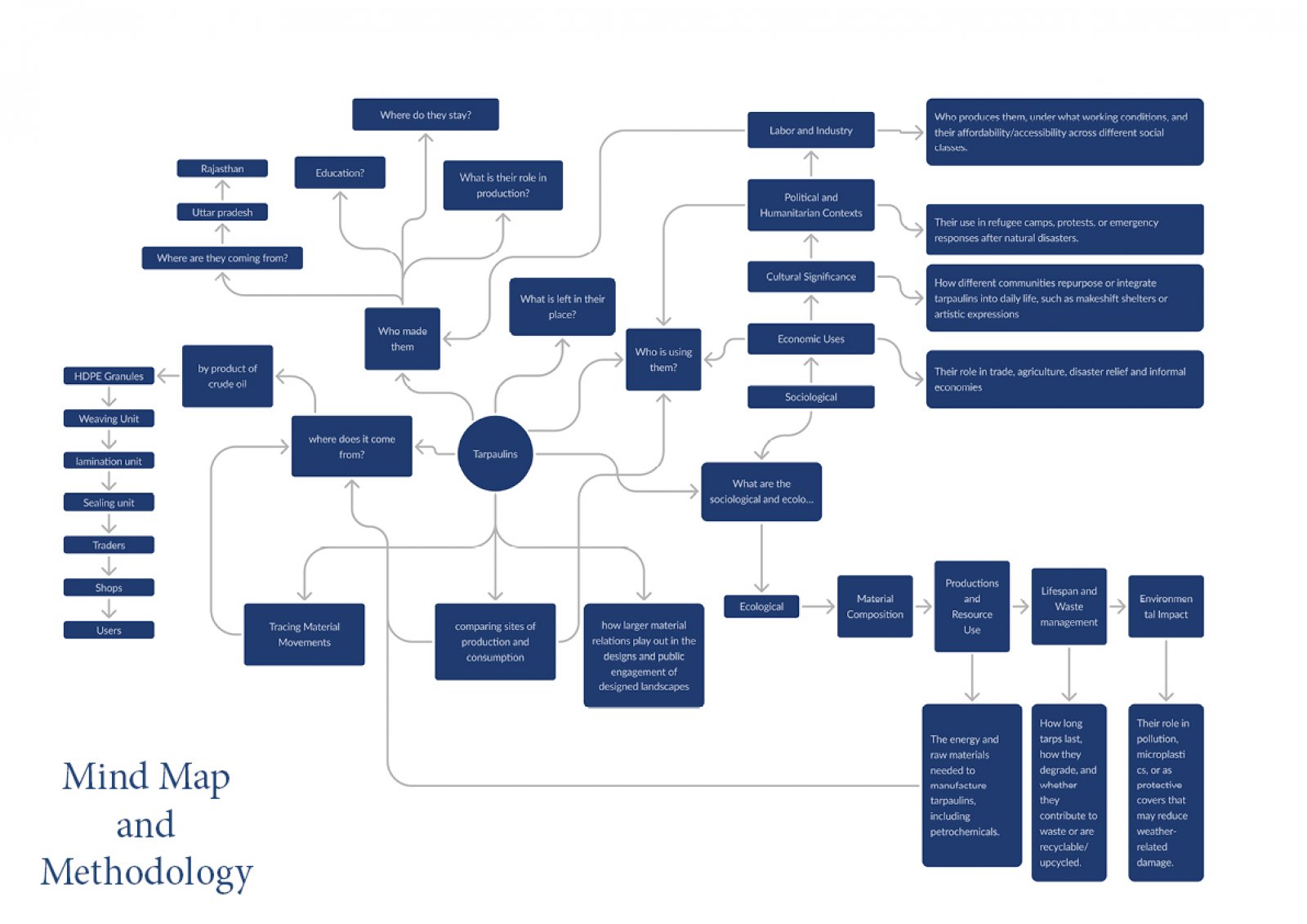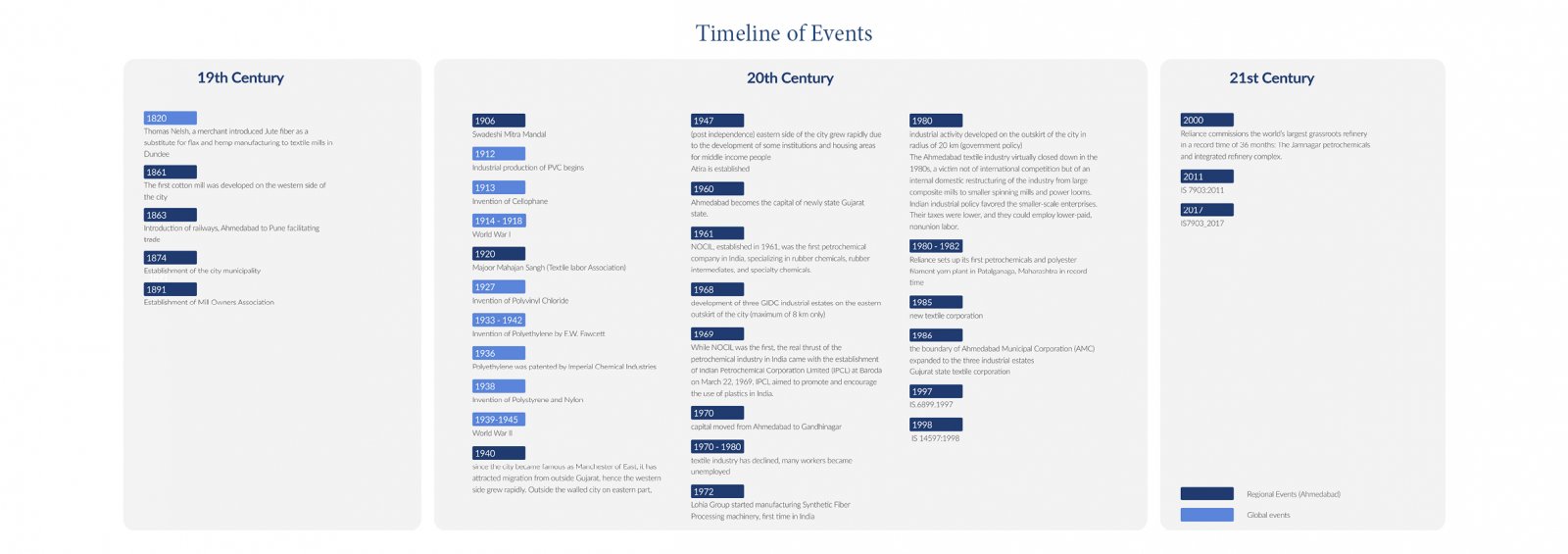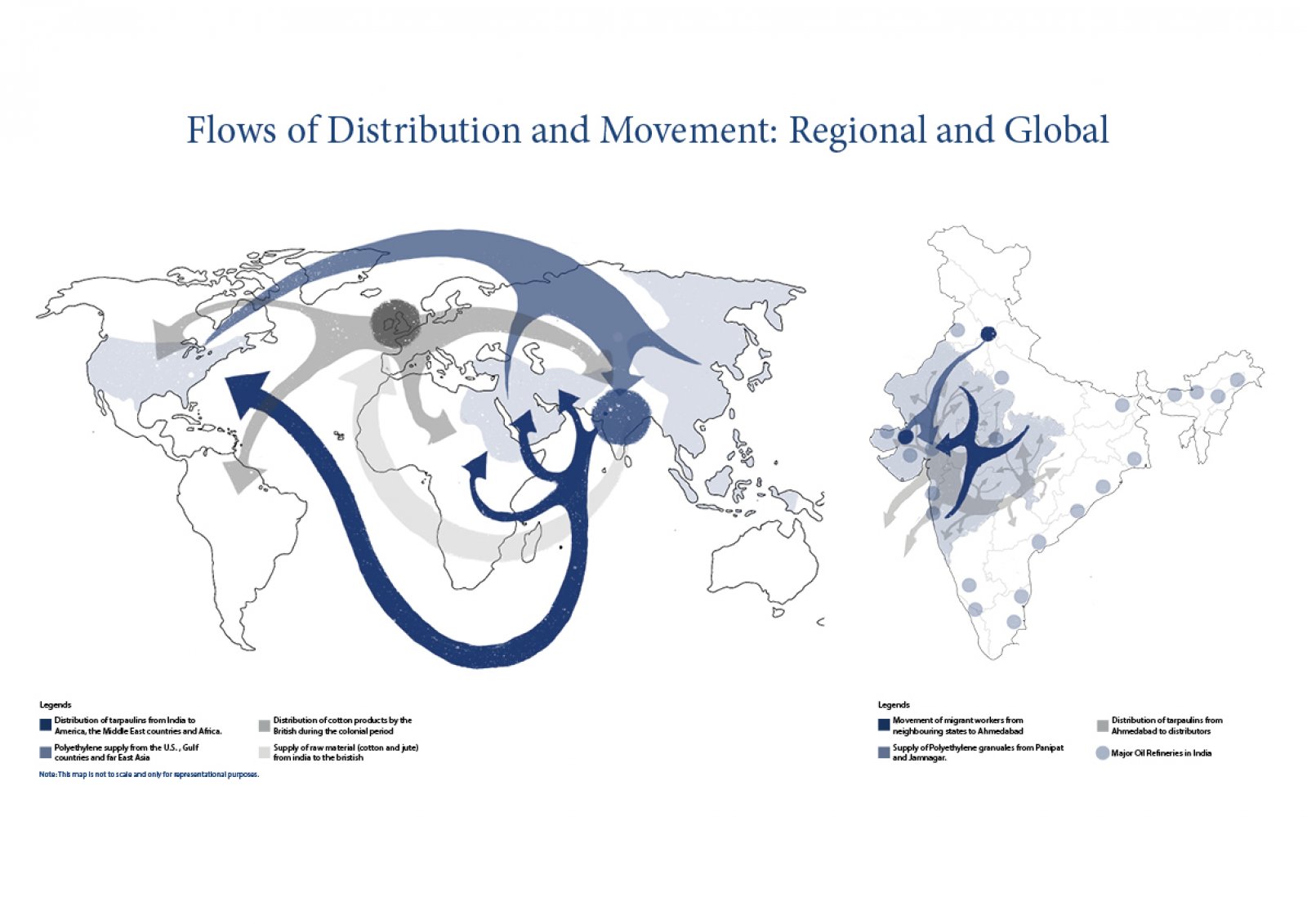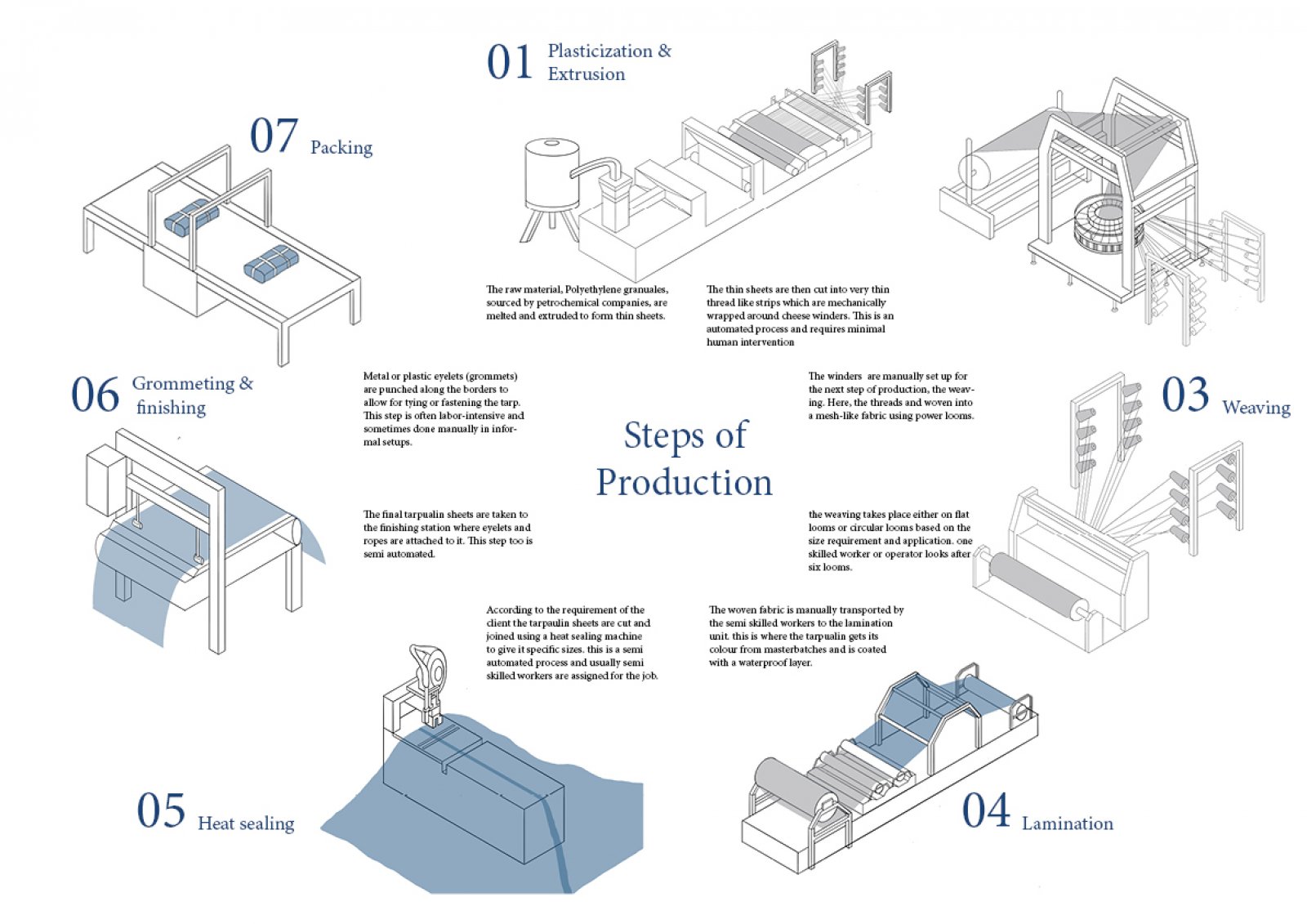Your browser is out-of-date!
For a richer surfing experience on our website, please update your browser. Update my browser now!
For a richer surfing experience on our website, please update your browser. Update my browser now!
Tarpaulin, often relegated to the background of architectural discourse, is a material that permeates urban life, appearing as thin plastic sheets stretched over roofs, market stalls, and makeshift shelters. This dissertation challenges the prevailing focus on monumental structures by foregrounding tarpaulins as dynamic archives of labour, migration, and economic change. It situates tarpaulins within their broader economic and spatial contexts, examining how their production and use are deeply embedded in urban economies and social histories.
Structured in three integrated parts, the study combines field research with archival analysis to trace the evolution of tarpaulins over the past 150 years. By investigating their manufacturing processes, including material choices, human labour, and technological shifts to uncover the complex interactions that shape these seemingly simple objects. The dissertation also draws on artistic interpretations, such as those by Bollansée, to reveal how tarpaulins serve as metaphors for human endurance and adaptability.





